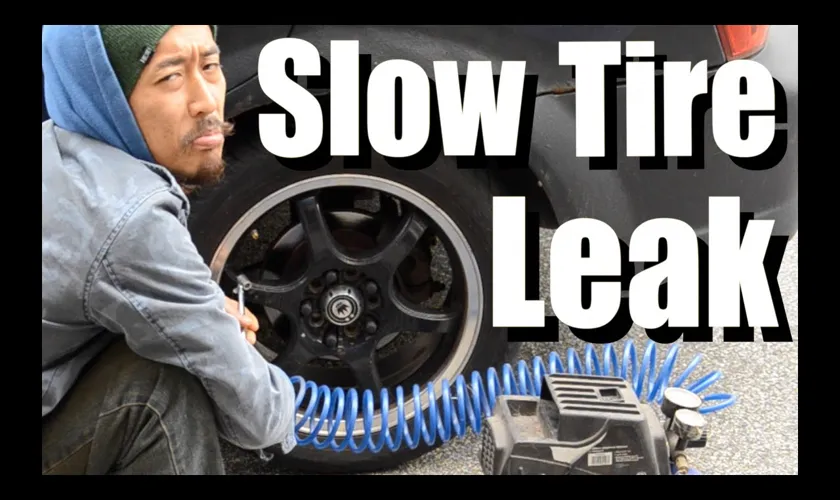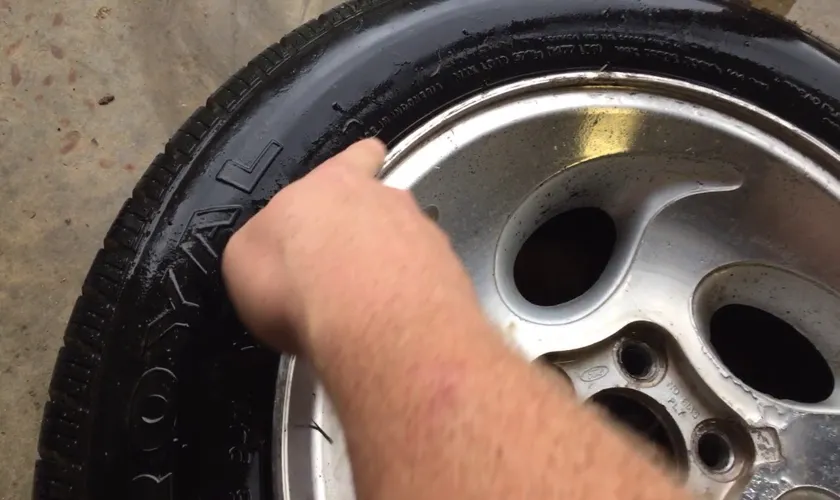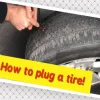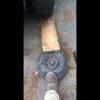There’s nothing worse than getting ready to hop in your car or hit the road and realizing that one of your tires is slowly leaking air. Not only is it frustrating, but it can also be a significant safety hazard. The good news is that fixing a slow leak in your tire doesn’t have to be a costly or time-consuming ordeal.
Whether you’re dealing with a punctured tire or a leaking valve stem, there are options available to you that won’t break the bank. So, what are your options? And how much can you expect to pay to get your tire fixed? Let’s explore some of the most common methods for fixing a slow tire leak and what you can expect in terms of costs.
Table of Contents
Identifying the Issue
If you’re wondering how much it will cost to fix a slow leak in your tire, the answer can vary. It all depends on the cause of the leak and the extent of the damage. Sometimes, it’s as simple as patching up a small puncture or replacing a worn out valve stem.
Other times, the tire may need to be replaced altogether. In general, repairing a flat tire can cost anywhere from $20 to $40, while replacing a tire can cost anywhere from $100 to $300, with some high-performance tires costing even more. Keep in mind that driving with a slow leak can be dangerous and can cause further damage to your tire and vehicle, so it’s best to get it checked out as soon as possible.
Overall, the cost to fix a slow leak in your tire will depend on the severity of the issue, so it’s best to get a professional evaluation to determine the right course of action.
Visually Inspect Your Tire
If you’re experiencing issues with your vehicle’s tire, the first step in identifying the problem is to give it a thorough visual inspection. Take a close look at the tire tread and sidewalls, checking for any signs of wear or damage. Is the tread evenly worn or are there bald spots or irregular patterns? Examine the sidewalls for bulges, cracks, or cuts.
These can be signs of structural damage that could cause a blowout or other tire failure. Don’t forget to check the tire pressure as well, as low pressure can also cause uneven tread wear and compromise the tire’s overall performance. By visually inspecting your tire, you can identify potential issues early on and take the necessary steps to address them before they become major safety concerns.

Check Tire Pressure Regularly
Checking tire pressure regularly is an important practice that every driver should follow. Low pressure in tires can significantly impact the handling and fuel efficiency of your vehicle. Identifying the issue is relatively straightforward.
Firstly, ensure that you have an accurate tire gauge. Then, check the recommended tire pressure for your vehicle, which can usually be found in the owner’s manual or on the driver’s side door jamb. Once you know the recommended pressure, use the gauge to measure the pressure in each tire.
If any tire is below the recommended pressure, it’s time to add air. Driving on underinflated tires can cause uneven tire wear, reduced traction, and even a blowout. Moreover, checking your tire pressure regularly not only keeps you safe but also helps extend the life of your tires, thus saving you money in the long run.
So, make it a habit to check your tire pressure at least once a month.
Costs of Repairing a Slow Leak
When it comes to fixing a slow leak in a tire, the costs can vary depending on the severity of the problem. If the tire just needs a simple patch, it may only cost around $10 to $20. However, if the leak is caused by a damaged valve stem or wheel, it could cost upwards of $50 to $7
Additionally, if the tire is worn out and needs to be replaced altogether, the costs will obviously be much higher. It’s important to get the leak fixed as soon as possible, as driving on a tire with low air pressure can cause it to wear unevenly and potentially blow out. Overall, the cost to fix a slow leak in a tire is relatively low in comparison to the potential dangers of driving on an improperly inflated tire.
Patch or Plug Repair
If you’ve got a slow leak in your tire, you might be wondering whether to patch or plug the hole. The good news is that both methods are affordable options for repairing a tire. The cost of patching a tire usually ranges from $10 to $30, while plugging a tire can cost between $10 to $20.
Patching involves removing the tire from the wheel, repairing the puncture on the inside, and then reattaching the tire. Plugging, on the other hand, is a quick fix that involves inserting a rubber plug into the hole from the outside of the tire. While plugging may seem like an easier and cheaper fix, it’s important to note that it’s only a temporary solution.
A plugged tire may not be suitable for driving at high speeds or on long trips. It’s always best to have a professional assess the damage and recommend the best course of action. In the end, the cost of repairing a slow leak is a small price to pay for a safe and reliable ride.
Replacing the Tire
Replacing a tire can be a costly affair, especially if you’re on a tight budget. But what about repairing a slow leak? Well, the costs can vary depending on several factors such as the location and severity of the leak, the type of tire you have, and the age of the tire. If the puncture is small and located in the middle of the tread, you may be able to have it patched up for a reasonable fee instead of replacing the entire tire.
However, if the puncture is located on the sidewall or the tire is old and worn out, then you may have no choice but to replace it altogether. It’s important to keep in mind that driving on a tire with a slow leak can actually be dangerous, as it can lead to a blowout or loss of control of the vehicle. So, the best course of action is to get it fixed as soon as possible before it turns into a more expensive problem.
Labor Costs
If you’ve noticed your tire pressure slowly decreasing over time, you may have a slow leak and need to address the issue before it becomes a major problem. Repairing a slow leak can cost anywhere from $20-$40, depending on the severity and the type of tire. This cost includes both the repair patch and labor costs associated with the repair.
It’s important to address a slow leak as soon as possible because the longer you wait, the more it will cost you in the long run. Not only will you be spending more money on gas due to decreased efficiency, but you could also be risking a blowout if the tire is not properly inflated. It’s always best to err on the side of caution and have a professional take a look at your tire if you suspect a slow leak.
Trust me, it’s much cheaper than having to replace the tire altogether.
Factors Affecting Repair Costs
If you notice a slow leak in your tire, it’s important to get it fixed as soon as possible to avoid any dangerous situations on the road. The cost to repair a slow leak depends on several factors, including the severity of the damage, the type of tire, and the location of the leak. For example, if the puncture is located on the sidewall or near the edge of the tire, it may not be possible to repair it and a new tire may be needed.
Additionally, the cost may vary depending on the type of tire you have, as high-performance or specialty tires may cost more to repair or replace. It’s best to consult with a professional mechanic or tire specialist to get an accurate estimate of how much it will cost to fix the slow leak in your tire. Remember, the cost of repair is minimal compared to the cost of an accident caused by a malfunctioning tire.
Tire Type and Size
When it comes to tire repair costs, there are several factors that can affect the final bill. One of the most significant factors is the type and size of the tire. This is because different types and sizes of tires require different repair techniques and tools.
For instance, repairing a puncture on a large commercial truck tire requires heavy-duty equipment and expertise, which can drive up the cost of repairs. On the other hand, repairing a small puncture on a passenger car tire is a simpler process that is less expensive. In addition to size and type, the position of the puncture can also affect the cost of repairs.
A puncture on the sidewall of a tire, for example, is more difficult to repair and may require the replacement of the entire tire. Overall, the cost of tire repair depends on a variety of factors and can range from a few dollars to several hundred dollars, with larger tires costing more to repair than smaller ones.
Severity of the Leak
When it comes to leaks, the severity of the problem can greatly affect the repair costs. Factors include the location of the leak, the size of the affected area, and the type of material the leak is coming from. A small leak in a visible area may be easy to detect and repair, resulting in a relatively low cost.
However, a leak in a hidden area like a wall or ceiling, or a leak caused by a damaged pipe or joint, can quickly become more complex and costly to fix. The type of material the leak is coming from, such as a sewer line or a roofing material, can also impact the repair costs. It’s important to address leaks as soon as they are detected, as the longer they go unaddressed, the higher the likelihood of more severe damage occurring and further driving up the cost of repairs.
Don’t ignore leaks – they can lead to much more expensive problems down the line!
Preventing Slow Leaks
If you have noticed a slow leak in your car’s tire, it is important that you take action to fix it. Not only can a slow leak cause your tire to gradually lose air pressure, but it can also result in a blowout or flat tire if left unchecked. So, how much does it cost to fix a slow leak in a tire? The cost can vary depending on the severity of the leak and whether or not it requires a patch or replacement.
On average, you can expect to pay around $20 to $30 to repair a slow leak. However, if you wait too long or ignore the issue, you may end up having to replace the entire tire, which can be much more expensive. To prevent slow leaks, be sure to regularly check your tire pressure with a gauge and inspect your tires for any signs of damage or wear.
It is also a good idea to have a professional inspect your tires every year to catch any potential issues before they become major problems. Remember, taking care of your tires is an essential part of keeping your car safe and reliable on the road.
Proper Tire Maintenance
Tire maintenance is crucial for ensuring road safety and optimal vehicle performance. One of the most common tire issues is a slow leak, which can cause low tire pressure and result in reduced fuel efficiency and increased wear and tear on the tires. To prevent slow leaks, it is important to regularly check tire pressure and inspect the tires for punctures or damage.
If a slow leak is detected, it should be promptly repaired by a professional tire technician using the proper materials and procedures. Additionally, avoiding driving over sharp objects and maintaining proper tire inflation levels can help prevent slow leaks from occurring in the first place. By taking these steps, you can ensure that your tires remain in good condition and avoid potential safety hazards on the road.
So, don’t forget to give your tires the attention they deserve to keep you safe on your journeys.
Avoiding Road Hazards
Preventing slow leaks on our vehicles can help us avoid tricky situations on the road. Slow leaks occur when there is a puncture in the tire, or the valve is not holding tight. In most cases, slow leaks go unnoticed until we have to refill the tire more often than usual.
To prevent slow leaks, we should regularly check our tires for any signs of damage, such as cracks or bulges. We should also make sure that the valve is not crooked or damaged. Additionally, it is essential to keep our tires correctly inflated as underinflated tires can lead to blowouts or other hazardous situations on the road.
In short, understanding and preventing slow leaks can help us stay safe and avoid road hazards, especially when we’re driving on long trips or in harsh weather conditions.
Final Thoughts and Recommendations
If you’re wondering how much it’ll cost to fix a slow leak in your tire, the answer can vary depending on a few factors. Generally, the cost to fix a slow leak in a tire can range from $20 to $40. However, if the tire’s sidewall is damaged, it may need to be replaced entirely, which can cost significantly more.
It’s always a good idea to get an estimate from a trusted tire professional before committing to the repair. Additionally, if you frequently experience slow leaks, it may be worth investing in new tires altogether. Old, worn-out tires are more prone to punctures and leaks, which can compromise your safety on the road.
Remember to check your tire pressure regularly, as under- or over-inflation can also lead to slow leaks. Overall, prioritizing proper tire maintenance can save you money and headaches in the long run.
Conclusion
In the grand scheme of things, the cost to fix a slow leak in your tire may seem insignificant. But when your tire’s health is compromised, its ability to keep you safe on the road is jeopardized. So, whether it’s a penny or a dollar, invest in the repair and preserve the life of your tire – and your own peace of mind while driving.
“
FAQs
What are the common reasons for slow leak in a tire?
Slow leaks can be caused by punctures, worn out valve stems, damaged rims, or even corrosion.
How can I check for a slow leak in my tire?
One way to check for a slow leak is to use a tire pressure gauge to measure the air pressure in the tire before and after a certain period of time. Another way is to inspect the tire for any visible damage or punctures.
Can a slow leak in a tire be repaired or does it need to be replaced?
Depending on the severity and cause of the leak, a tire with a slow leak may be able to be repaired by a professional. However, if the tire has extensive damage or is too worn out, it may need to be replaced.
How much does it cost to fix a slow leak in a tire?
The cost of fixing a slow leak in a tire can vary depending on the cause of the leak and where you go to get it fixed. It can range from a simple inexpensive repair to a more costly replacement of the tire.
Can I fix a slow leak in a tire myself?
It is possible to fix a slow leak in a tire yourself if you have the proper tools and knowledge. However, it is recommended to have a professional handle any repairs to ensure safety and proper handling of the tire.
How long can I drive on a tire with a slow leak?
It is not recommended to drive on a tire with a slow leak for an extended period of time. As soon as you notice a decrease in air pressure, it is important to have the tire checked and repaired as soon as possible to avoid further damage or potential safety hazards.
How can I prevent getting a slow leak in my tire?
Regular tire maintenance can help prevent slow leaks. This includes checking tire pressure, inspecting for any visible damage, making sure valve stems are in good condition, and rotating your tires regularly.



